Hands On with USB Type C: Reversible USB Connectors
by Joshua Ho on September 11, 2014 9:00 AM EST- Posted in
- Smartphones
- Mobile
- Laptops
- Tablets
- USB-IF
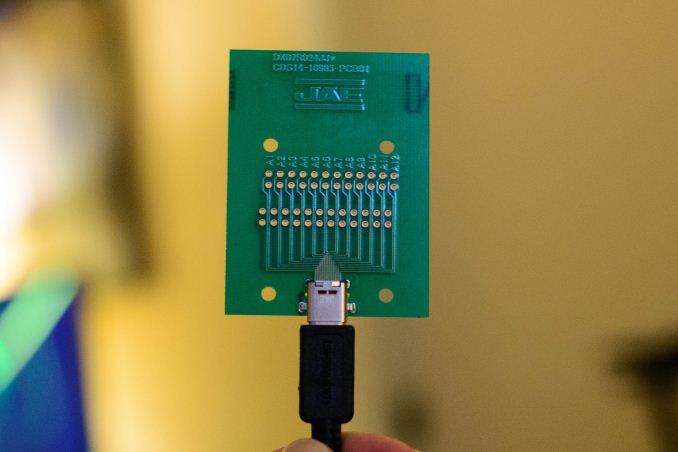
Today, the USB-IF brought me in to see the long-awaited USB Type C cables. We've written about this before, but for those that aren't familiar with this new USB spec, the USB Type C cable and USB 3.1 spec are designed with the future in mind. As a result, there are a lot of new features to talk about. We'll start with the USB 3.1 spec before we get into the Type C connector.
With USB 3.1, we see a few key improvements. Peak throughput goes to 10 Gbps from 5 Gbps, which translates to a peak of 1.25 GB/sec. In a demo of an early controller with two SSDs attached to the system I saw peak throughput of 833 MB/sec. As a side note, I also saw a demo of wireless USB connectivity from smartphone to laptop and laptop to smartphone, which was definitely pretty cool. Getting back to the USB 3.1 spec, USB Power Delivery 2.0 (PD) makes it possible for USB to supply up to 100 watts, and coexists with the BC 1.2 spec that is used in USB power adapters to charge phones so a single port would be able to provide power for both systems. In addition, USB PD 2.0 allows for power to go both ways without changing the direction of the cable, so a laptop would be able to send and receive power from the same port. Finally, USB Type-C extensions mean that it's possible to do all kinds of interesting applications over USB ports, such as sending audio and video data. It's even possible for a USB Type C port to send PCI-E data through the connection for use cases such as a two in one convertible tablet.
This opens up the possibility for a dock scenario where a single cable to the monitor can charge a laptop and also mirror the laptop's display onto the external monitor, and the external monitor would also be able to serve as a USB hub for a keyboard, mouse, headsets, flash drives, and other USB peripherals. While the laptop charging aspect and integrated USB hub in display wasn't demonstrated in the prototype I saw, everything else was fully working as shown in the photo above.
I was also able to get some photos of the cable and receptacle. Unfortunately it took flash to really show the detail in the connector but it definitely will be a great standard for all kinds of applications. While I'm sure that there will be differences in the final product, the reversible plug works just like expected and could be quickly inserted from behind the back. The USB-IF believes that this standard will show up in products shipping in 2015. It does seem that the connector is a bit less compact than microUSB, but the benefits outweigh this increase in size.


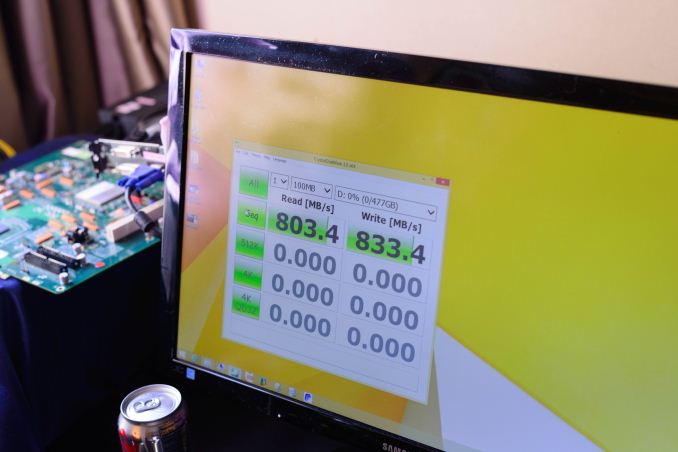
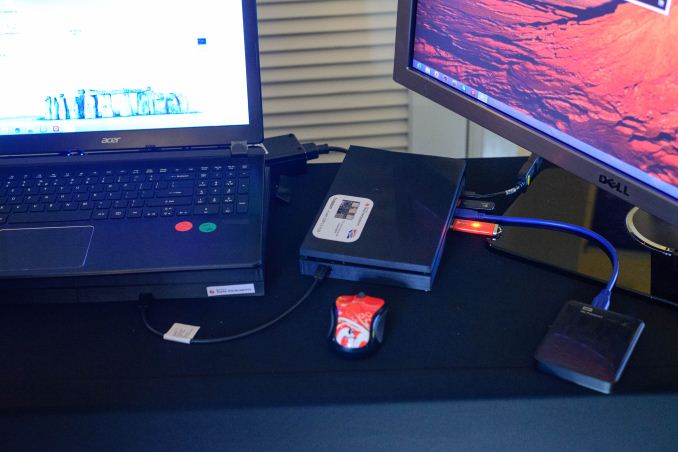
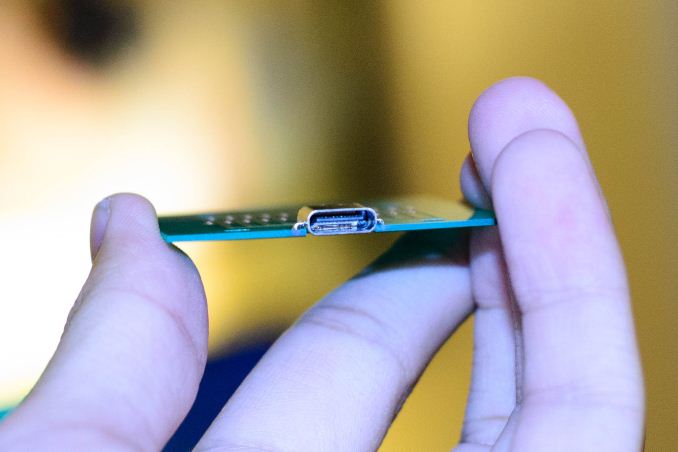
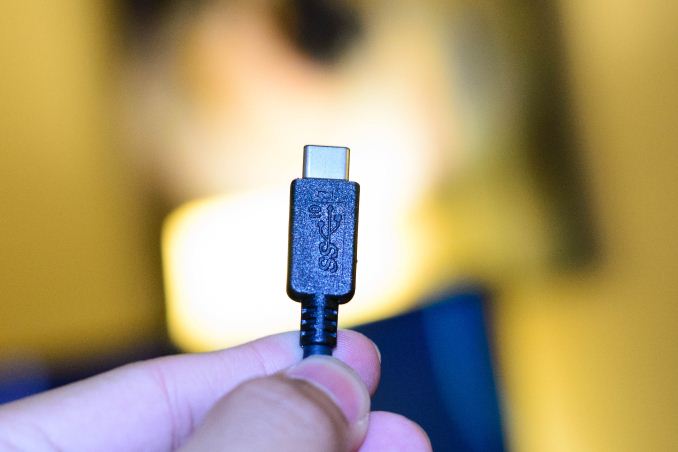
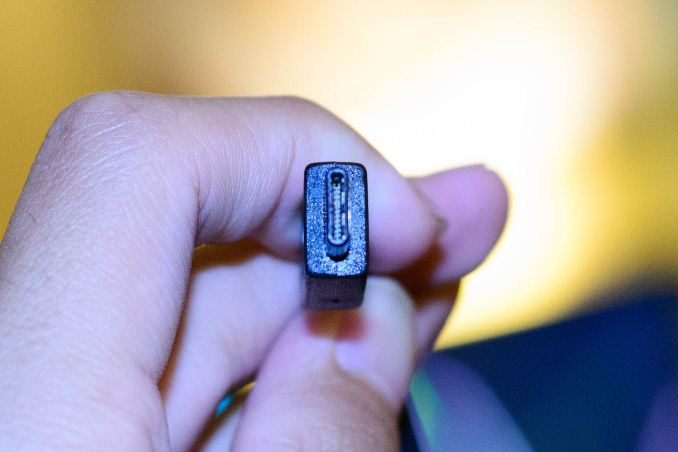








91 Comments
View All Comments
londedoganet - Thursday, September 11, 2014 - link
"It's even possible for a USB Type C port to send PCI-E data through the connection for use cases such as a two in one convertible tablet."Bye, Thunderbolt, it was nice knowing you. With this (USB3.1 + PCIe) and Dockport (DisplayPort + USB3.0) taking away both of its selling points (DisplayPort + PCIe) while adding more, I don't think that Intel can continue to justify its existence. Perhaps now we'll see more external GPU docks for laptops (PCIe over USB Type C connectors).
dgingeri - Thursday, September 11, 2014 - link
Don't worry, they have Apple. Apple will keep TB alive quite a while longer. They don't just up and switch when better things come along. They wait it out until their old tech becomes burdensome, and then come out with something all new, and usually unrefined, like TB was when it first hit.rpmurray - Saturday, September 13, 2014 - link
Are you honestly peddling this when most PCs still have PS/2 and VGA ports?iwod - Thursday, September 11, 2014 - link
May be i am not understanding it right. Does it mean PCI-E signals get transferred over without USB overhead? Or is the USB protocol still involved?JCP2014 - Thursday, September 11, 2014 - link
When do you think we will start seeing phones with this appear? Is next year's GS6, M9, G4, etc too early? I know it says 2015 in the article, but when do you think it will become the standard for flagship phones?edwpang - Thursday, September 11, 2014 - link
Please make the new connector more durable. I have a lot of micro-usb connectors. Some was not reliable in the beginning. Some become less reliable over time. Now only 2-3 are actually working reliably, others are just not connecting or disconnecting all the time.swimtech - Friday, September 12, 2014 - link
Agreed, I've been focused on hardware support for a university for 19 years now, and both the smaller USB form factors have had reliability problems due to mechanical weaknesses. Mini USB connectors fail often because the female connector is simply surface mounted to the internal PCB - solder on the legs of the internal connector are all that hold the ones I've seen in place. The male connector looks ok, hopefully the female jack is much more robust - especially since it'll be carrying much higher wattage in certain scenarios - arcing, depending on the pin configuration, will/should be a strong concern for those engineering the jack.kezeka - Thursday, September 11, 2014 - link
My chief concern with the type C connector is the actual design itself. Is there going to be a central pin in the female port that the male port fits around? That seems like a massive weak point for this connector if so. I guess if it is deep enough within the female port that you are forced to be in the correct angle by the time you reach it, then it will probably be resilient enough to stand up to day to days stress. That said, is there a reason not to design it like a lightning style connector where the male plug first and fills the female port completely without any weak points in the connection?I honestly don't know, which is why I am asking.
DanNeely - Thursday, September 11, 2014 - link
Look at the 3rd picture in the article; it's still got a tongue on the device end.DanNeely - Thursday, September 11, 2014 - link
...4th...